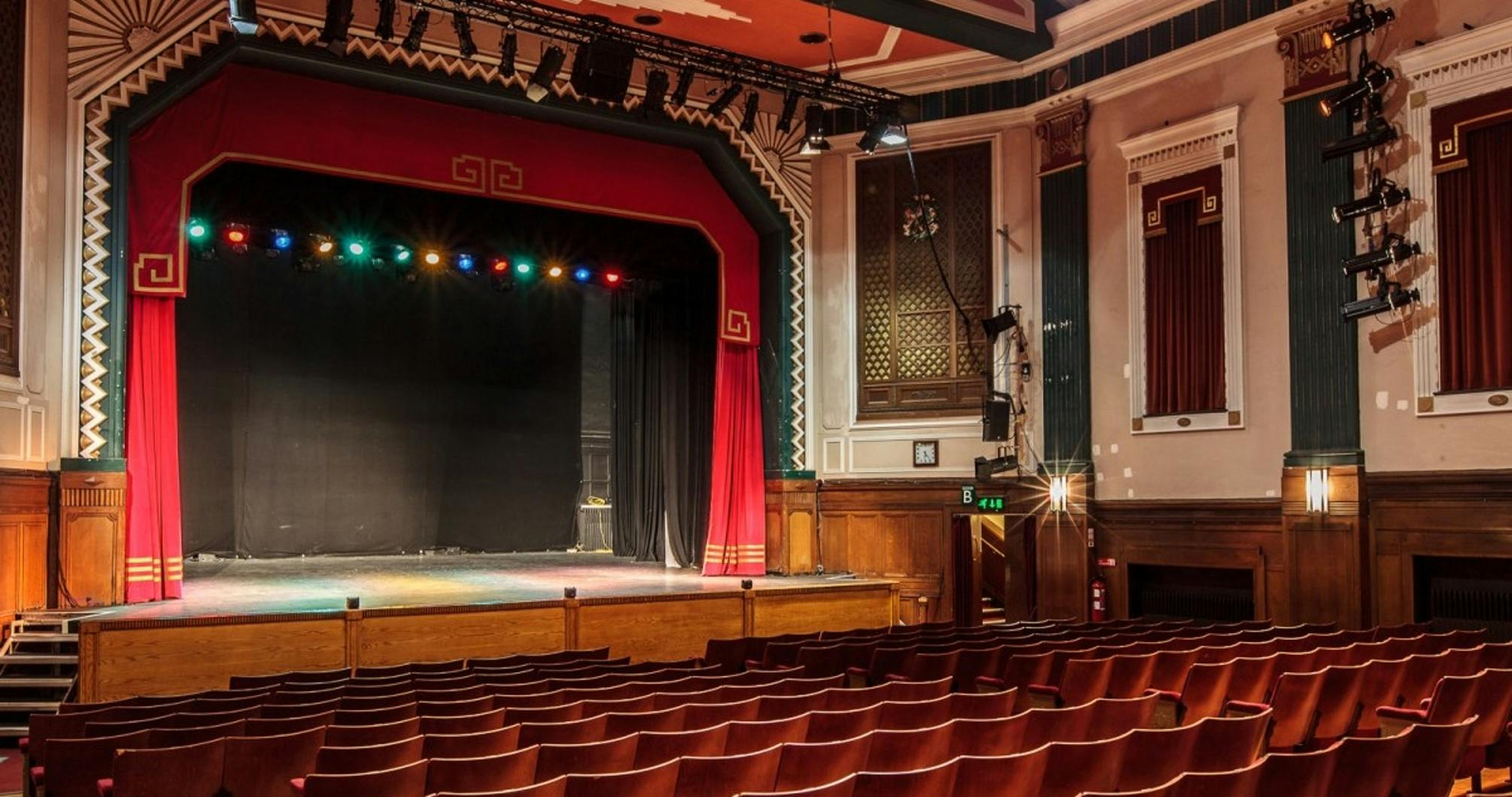Main Auditorium
Carnegie Hall
Tap to scroll to images
- From £3875
- 600 Standing
- From £3875
- 600 Standing
The Auditorium at Carnegie Hall has a proscenium arch with stalls and balcony, individual tip-up chairs with arms, and a seating capacity of 500. The sound mix position is within the Auditorium, and some seats have been removed to accommodate this. The stage features a raked wood floor covered in 6mm hardboard painted black, black tabs, legs, and boarders, and a fibre-optic starcloth permanently hung at the rear of the stage. The stage dimensions include a proscenium height of 6.600m, proscenium width of 9.000m, and a maximum stage depth of 14.000m. The theatre does not have a fly tower, but it does have flying bars with various weight limits. The lighting console is an ETC Ion, and the sound console is a DigiCo SD9 situated in the Auditorium. The FOH system includes Meyer Sound loudspeakers and subwoofers. The theatre is licensed for specific frequencies and has a limited gel stock. The Auditorium does not provide props, working lamps, or carpet runs. The space also includes dressing rooms, backstage utilities, and parking facilities. Technical requirements must be submitted four weeks in advance, and all incoming mains equipment must be tested for electrical safety. This information is intended as a guide and may not always be guaranteed accurate.
Photos
More about Carnegie Hall
Imposing art-deco theatre for music, comedy and drama touring acts, plus bistro with river views. Carnegie Hall was commissioned in the early 20th century to provide Dunfermline with a public hall for the arts. It was named in honour of industrialist, businessman and philanthropist Andrew Carnegie, widely regarded as Dunfermline’s most famous son. The building was the second Carnegie Hall, after the well-known landmark in Carnegie’s adopted home of New York. Designed by local architects Muirhead and Rutherford, Louise Carnegie, his daughter, attended the earth-cutting ceremony. The Hall opened in 1937 with a programme of musical recitals and children’s entertainment, and, as other venues faded in Dunfermline, Carnegie Hall became the main theatre for variety shows and amateur dramatics. In 1974, Dunfermline District Council took over the management of the Hall, introducing a civic theatre programme that continued to support local amateur groups, but now also included popular Scottish entertainment, pop music acts and pantomime. In 1976, comedian Billy Connolly recorded his Atlantic Bridge album at both Carnegie Halls in Dunfermline and New York. Contemporary professional drama was added to the mix in 1996. After a period without full-time management, a new management team was appointed in 2000 to develop the hall and its activities. The new staff developed the Carnegie Hall complex, which now incorporated the adjoining Music Institute as a development and studio performance space, into a dynamic arts centre for Dunfermline. The addition of the refurbished Tiffany’s Restaurant completed the venue’s current incarnation as a vibrant and popular destination for drama, comedy, music and more.